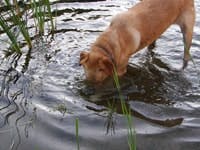Sixteen U.S. communities will share $2.7 million in grants from the U.S. EPA to continue progress on solving local health and environmental issues. The Community Action for a Renewed Environment grants will address a wide variety of environmental health issues in both rural and urban areas.
“President Bush and EPA are empowering communities with the tools they need to address their local environmental challenges,” said EPA Administrator Stephen L. Johnson. “Through CARE, we are putting communities in the driver’s seat to deliver their residents real environmental results.”
The CARE program is a community-based, community-driven program that builds partnerships to help the public understand and reduce toxic risks from numerous sources. Examples of projects include addressing water quality in Puget Sound, helping to rebuild St. Bernard Parish in Louisiana, helping the Cherokee Nation deal with toxic waste and reducing air toxics in Tucson.
There are two types of CARE cooperative agreements. The smaller Level I cooperative agreements are approximately $90,000 each and will help establish community-based partnerships dedicated to reducing toxics in local environments. Level II awards are larger—approximately $275,000—and are designed to support communities like Boston, Montana’s Indiana Tribes and Marquette, Mich. that have already established broad-based partnerships and have identified the priority toxic risks in the community. These communities are further along in the CARE process and are prepared to measure results, implement the risk reduction activities and become self-sustaining.
Level I grant recipients:
- Alaska: Nunakauyak Traditional Council, Nelson Island
- Colorado: The Citizens for Clean Air and Water in Pueblo/Southern Colorado, Pueblo
- Georgia: Harambee House, Savannah
- Iowa: The Cerro Gordo County Department of Public Health, Cerro Gordo County
- Louisiana: St. Bernard Parish Government, St. Bernard Parish
- Massachusetts: Nuestras Raices, Mount Holyoke
- Michigan: SW Detroit Environmental Vision, SW Detroit
- Oklahoma: The Cherokee Nation
- South Carolina: The City of Rock Hill
- Washington: Tacoma-Pierce County Health Department, Pierce County
Level II grant recipients:
- Arizona: Sonora Environment Research Institute, Tucson
- Massachusetts: Boston Public Health Commission
- Michigan: The Central Lake Superior Watershed Partnership, Marquette
- Montana: Rocky Mountain College, Montana Indian County
- New Jersey: Clean Air Communities, Camden
- Pennsylvania: Pennsylvania State University, Philadelphia
Source: EPA


